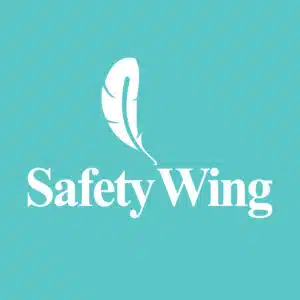With so many things to do in Oslo, it’s hard to know where to start when it comes to visiting this wonderful city. It can be overwhelming to decide what you should and shouldn’t visit.
That’s why I’ve put together this list to help you decide. Norway’s capital city is an interesting place and full of incredible sights.
I enjoyed my time in the city exploring the incredible Viking Ship Museum, which any trip to Oslo has to include. As well as the impressive Akershus Fortress and numerous museums in the city.
You’ll find lots of activities in Oslo while you’re there and you certainly won’t be short of stuff to do!
Oslo Opera House, for example, will keep you coming back to check out its majestic beauty, while the ski fields just outside the city are an ideal place to head in the winter!
Without further ado, here’s my list of what to do in Oslo!
Disclosure: This article may contain affiliate/compensated links. For full information, please see our full disclosure policy.
Table of Contents
Things To Do in Oslo
Whether you spend 3 days in Oslo or more, you’ll have a great time. with so much to see, it’s hard to get bored in Oslo.
The best places to visit in Oslo are spread out across the city, so that’s why I’ve included this map to help you navigate the city.
Oslo Opera House
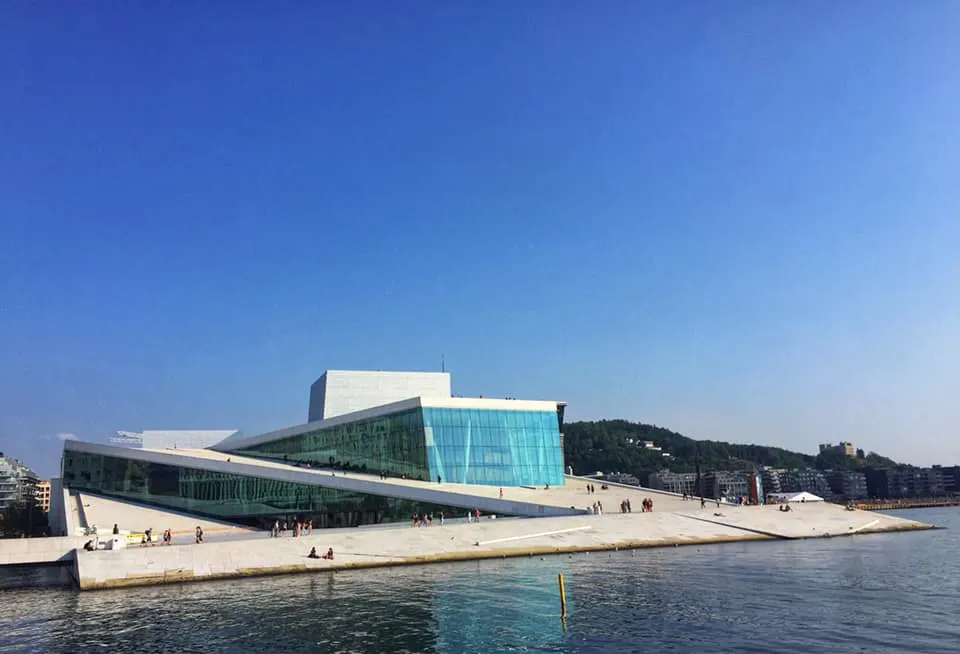
Without a doubt, the Oslo Opera House is one of the best things to do in Oslo. It’s an incredible piece of architecture and somewhere you have to visit in Oslo.
I’m not a fan of opera, but the building is incredible. It’s beautiful to look at, and due to its ingenious design, you can walk up on the roof!
This allows you to get a feel for the scale of the building and get a great view of the city too! If you want to go inside you can take a look around.
If you’re a big fan of opera, then it’s worth trying to coincide your visit with a performance. Otherwise, checking out the building is something you have to do while you’re in the city!
Akershus Fortress
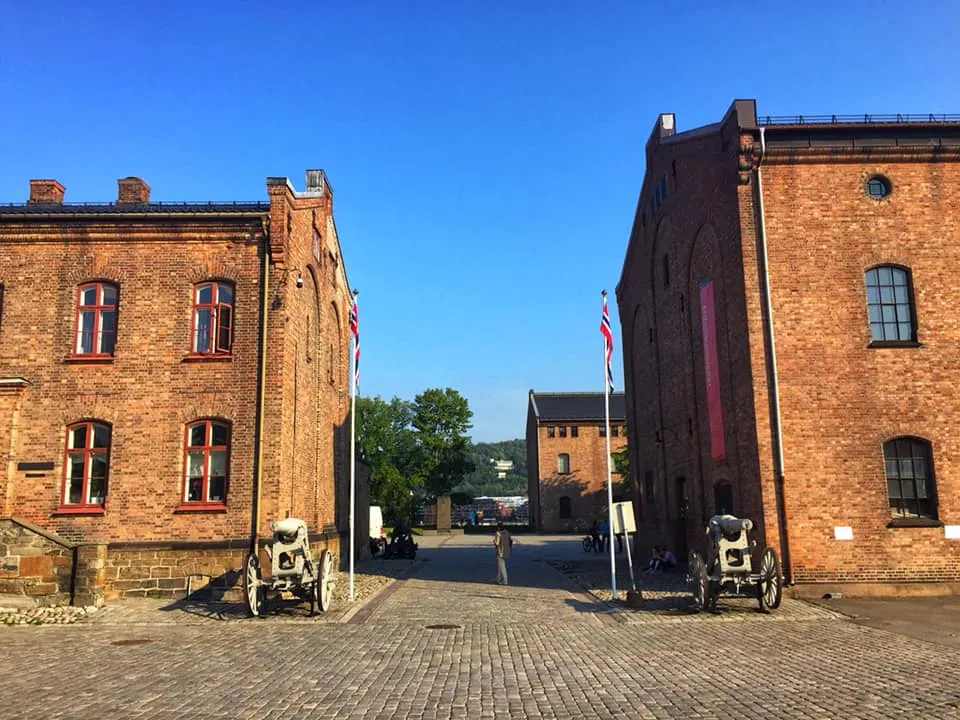
The Akershus Fortress is an impressive area that once served as a Royal residence. It was built in the 13th century and played a part in numerous battles throughout Norwegian history.
The fortress is not the installation it once was, but it’s still used for military purposes. However, it’s now also open to the public from 6:00 and 21:00 daily.
The Royal Mausoleum is located in the fortress and is home to former kings such as King Sigurd I and King Haakon V.
The fortress is also used as a venue for concerts and public holiday celebrations, so it may be worth checking if any are on before you visit.
Due to the size of the fortress, it might be a good idea to go on a guided tour. This way you will learn about the history of the fortress and all the little tidbits you, otherwise, wouldn’t find out.
Viking Ship Museum
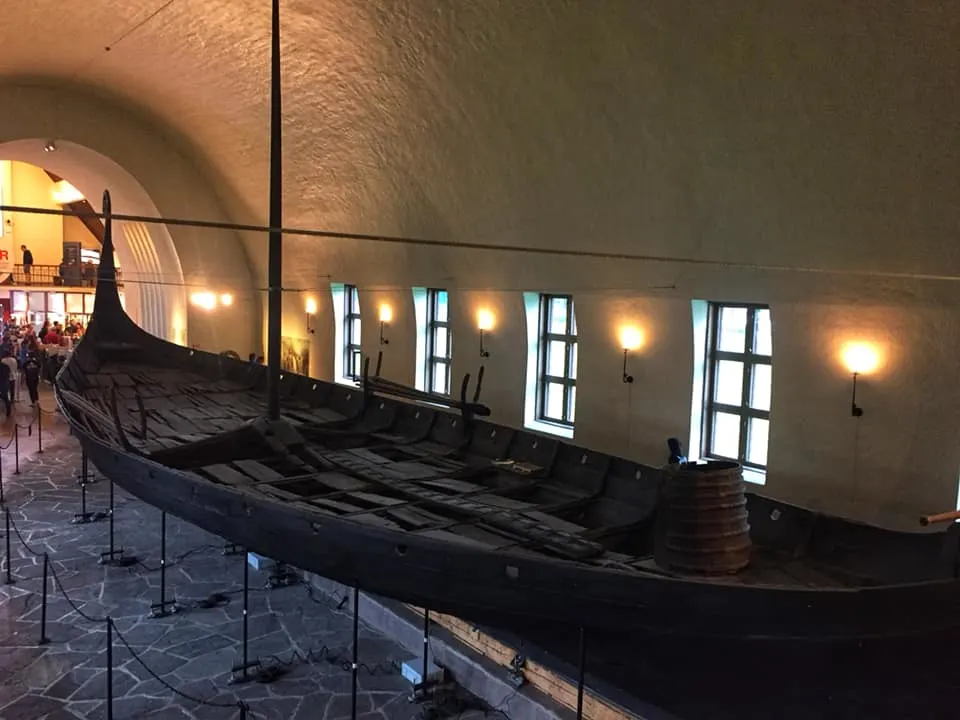
Of all the many places to visit in Oslo, the Viking Ship Museum might just be the best. this museum is incredible and well worth visiting.
As the name suggests, it’s home to Viking ships and they need to be seen to be believed. Three of them sit in the museum and they are impressive boats.
It’s amazing to think that these boats were used by Vikings to sail around given their size and the standard of boats used today.
These ships were excavated from sites around Norway and are not on display in the museum, along with several other artefacts that were found alongside them.
Even if you only have a cursory interest in Viking history, you’ll find this museum fascinating! It’s easily one of the best places to visit in Norway.
Karl Johan Street
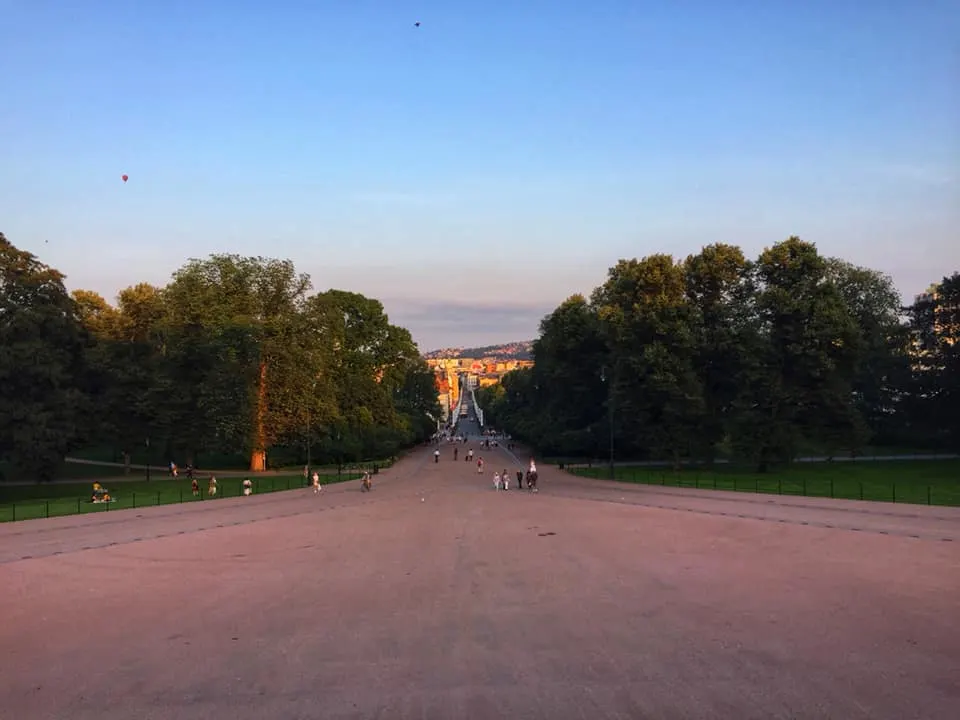
Karl Johan Street is the main street in Oslo and one that leads to the Royal Palace at its end.
One of the best things to do in Oslo is to walk along the street up to the palace. You’ll get to see a lot of the city this way and once you reach the palace, you get a nice way back down the street.
The street contains some interesting points of interest in Oslo such as Storting, which is the Norwegian assembly, Eidsvolls Pass, which serves as a skiing rink in winter and the National Theatre.
It’s also Oslo’s main shopping street, so if you want to get a few items and take a look around, this is the place to go!
A walk along Karl Johan Street is a good way to get your bearings and a way to see a must if you want to see some of the best sights in Oslo!
The Royal Palace
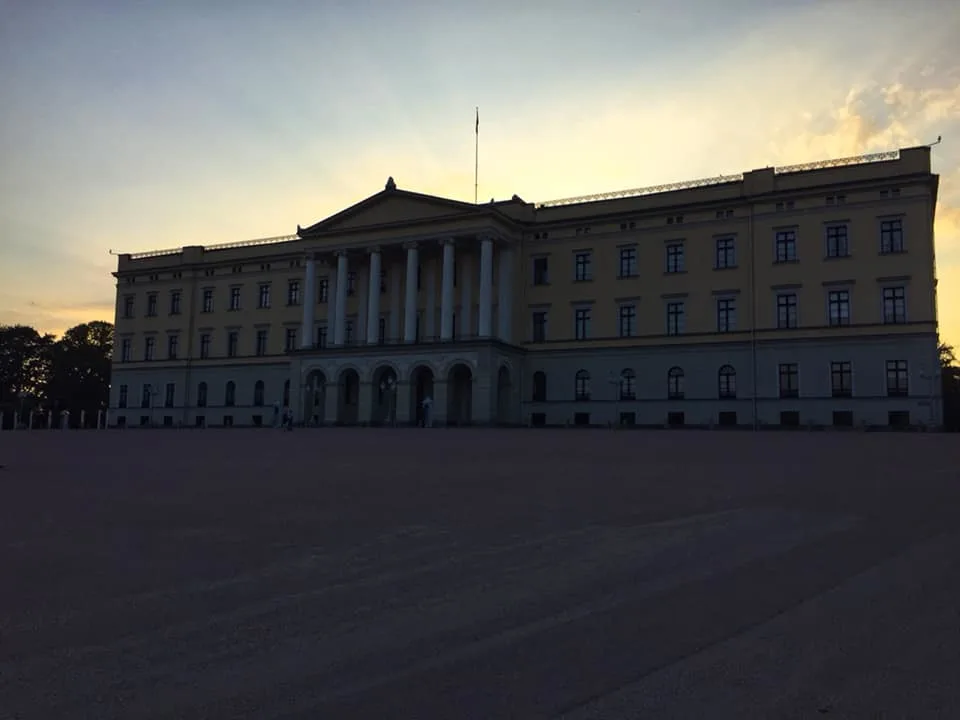
The Royal Palace is one of the most impressive buildings in Rome, Commissioned by the French-born King Charles III, it was completed five years after he died in 1849.
Haakon VI became the first monarch to reside in the palace following the dissolution of the union between Norway and Sweden.
Perhaps the most amazing thing about the place is that you can walk right up to it. Unlike Buckingham Palace in the UK, there are no barriers in front of the building.
You can take a look inside the palace during the summer when it opens to visitors. However, this can only be done as part of a guided tour.
If you want to take a look inside this magnificent building, it may be worth booking in advance!
Frogner Park
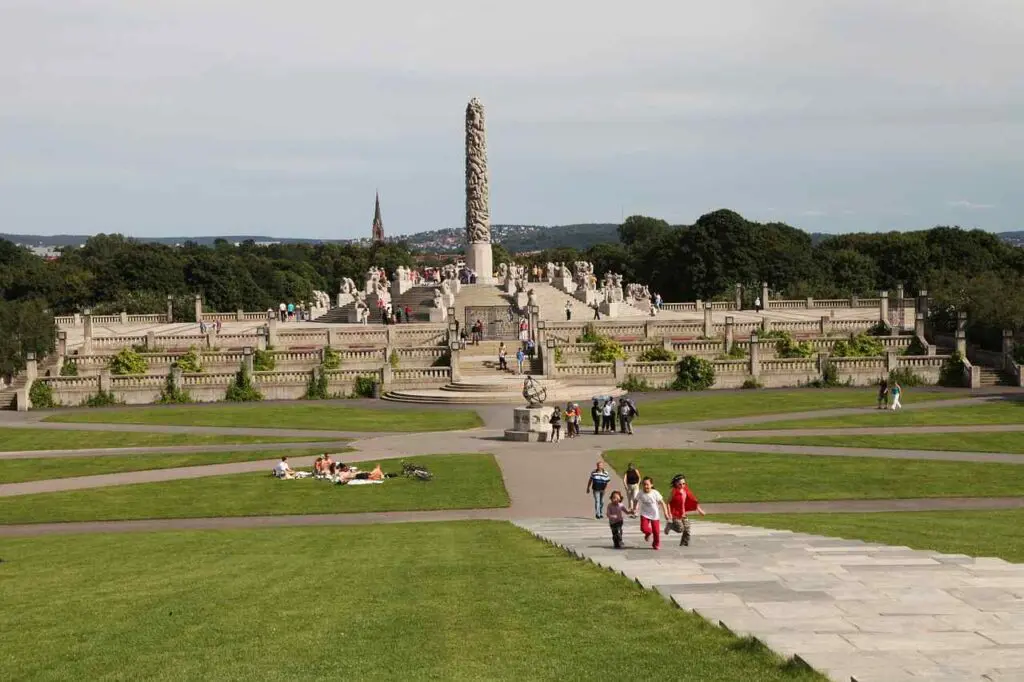
Frogner Park is a public park located in the west of Oslo. It’s a huge public space that’s one of the best places to visit in Oslo.
The park is famous for the 212 sculptures you can find by the sculptor Gustav Vigeland. The sculptures are a unique addition to the park and some of them are bizarre.
One sculpture depicts a man fighting with babies! Still, they’re worth checking out as there are some incredible pieces there.
A 14-metre totem composed of 121 human figures took Vigeland 14 years to create! These amazing works of art are a sight to behold, so make sure you check them out during your trip to Oslo!
Munch Museum
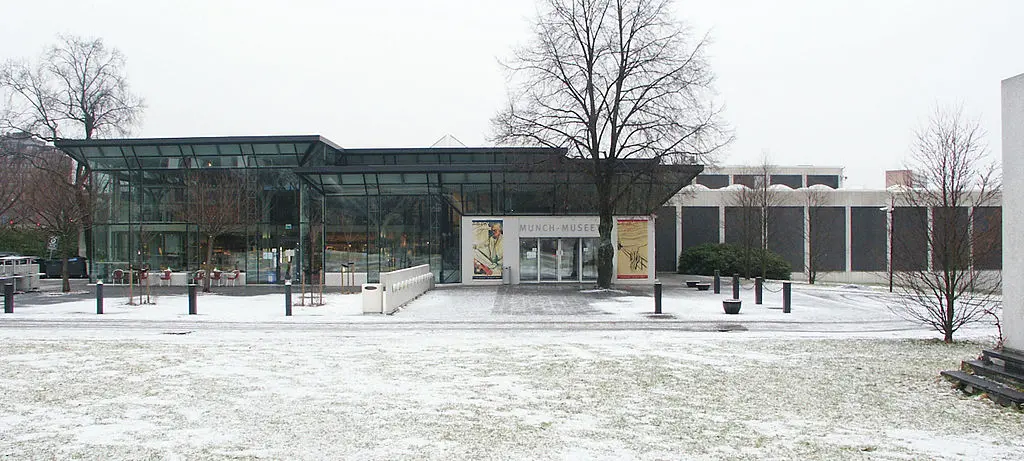
Munch’s The Scream is one of the most well-known pieces of art in the world. It’s an iconic painting, but the artist is less well-known.
A visit to Munch’s Museum in downtown Oslo is one of the city’s attractions you can’t afford to miss. The museum doesn’t contain his famous painting, which is now in the National Museum, but it does contain a lot of his other works.
If you’re a lover of art then this is somewhere you have to visit. The Munch Museum contains over 1,200 paintings, 18,000 prints, 6 sculptures and 500 plates! There’s a lot of stuff to see.
Even if you’re not a fan of art, the museum is worth a visit. You’ll find a lot of interesting artworks, plus it’s fascinating to learn more about a figure as interesting as Munch.
Nordmarka
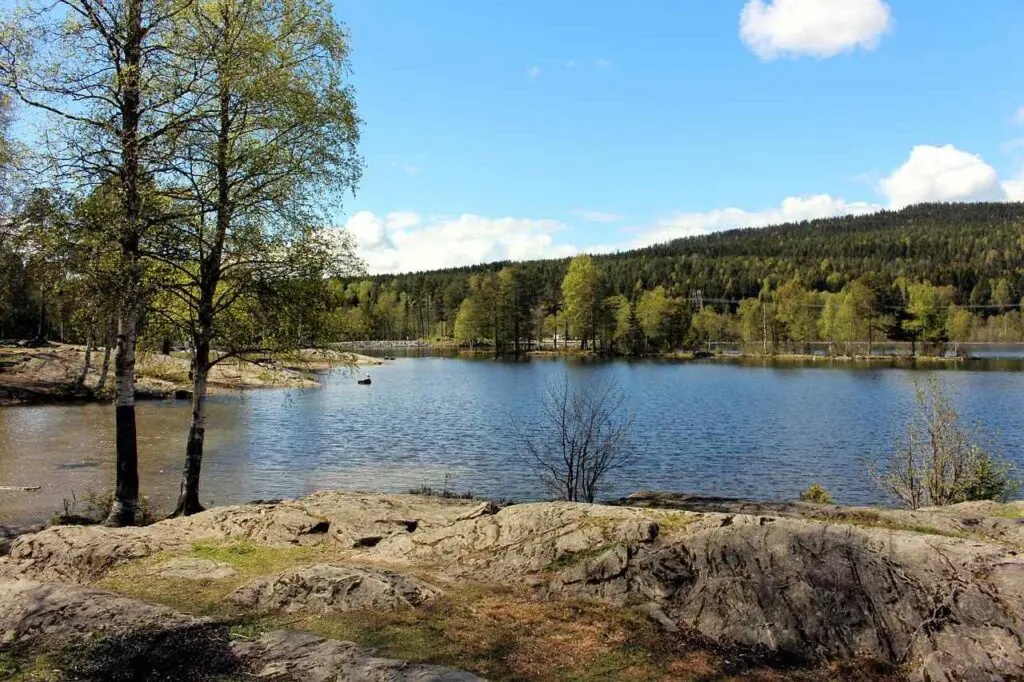
Nordmarka isn’t strictly in Oslo, but it’s only a short trip away on public transport. This is one of the best things about backpacking in Norway, as no matter what city you’re in, nature is only around the corner!
You can reach Nordmarka in 20 minutes if you take the train to Frognerseter and then you’re free to explore this amazing place.
If you love the outdoors, Nordmarka is a great place to visit. You can go hiking, cycling or running in the park. There are lots of trails to follow if you intend to go hiking, and as with everywhere in Norway, the scenery is stunning!
I highly recommend you take the train to Nordmarka if you’re in Oslo for an extended period. It’s a beautiful place and a nice contrast to staying in the city.
Holmenkollen Ski Jump
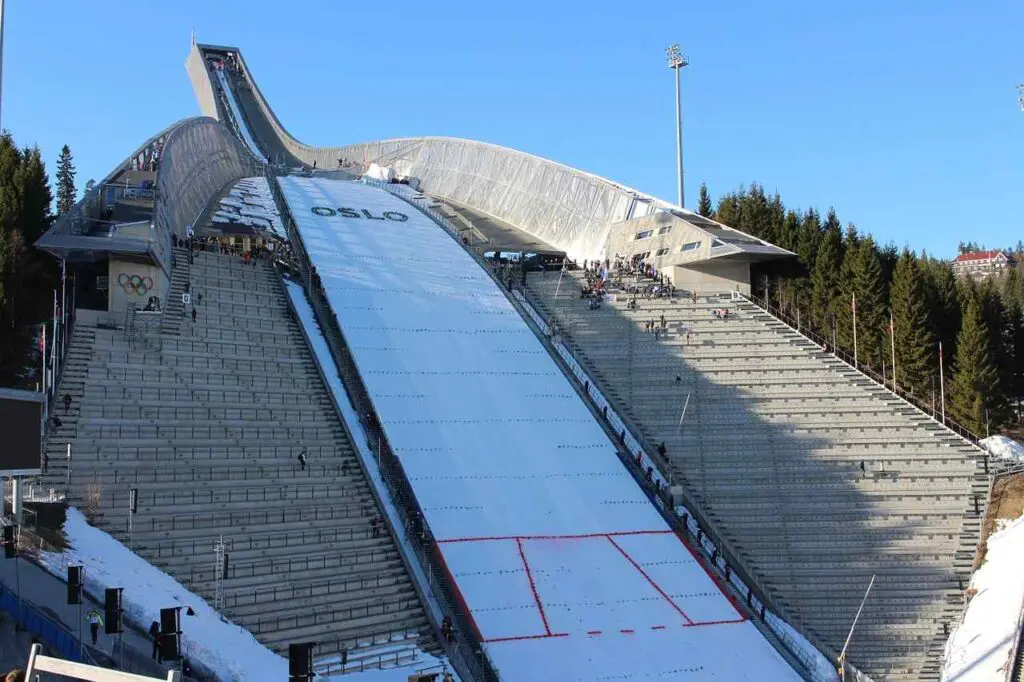
If you’re a sports lover, then a visit to the Holmenkollen Ski Jump is one of the best activities in Oslo you can do. Unsurprisingly for a country that has a lot of mountains, winter sports are very popular in Norway.
The Holmenkollbakken hill, where the ski jump is located, has been hosting competitions since 1892! It was also the home of the ski jumping event during the 1952 Winter Olympics.
While you won’t be able to perform a ski jump yourself, it’s worth visiting to get a sense of the scale of these jumps. They are huge!
The top of the jump platform also serves as a good viewpoint and offers a fantastic view of Oslo and the surrounding area. There’s also a museum dedicated to ski jumping so you can learn more about the sport!
Vigeland Museum
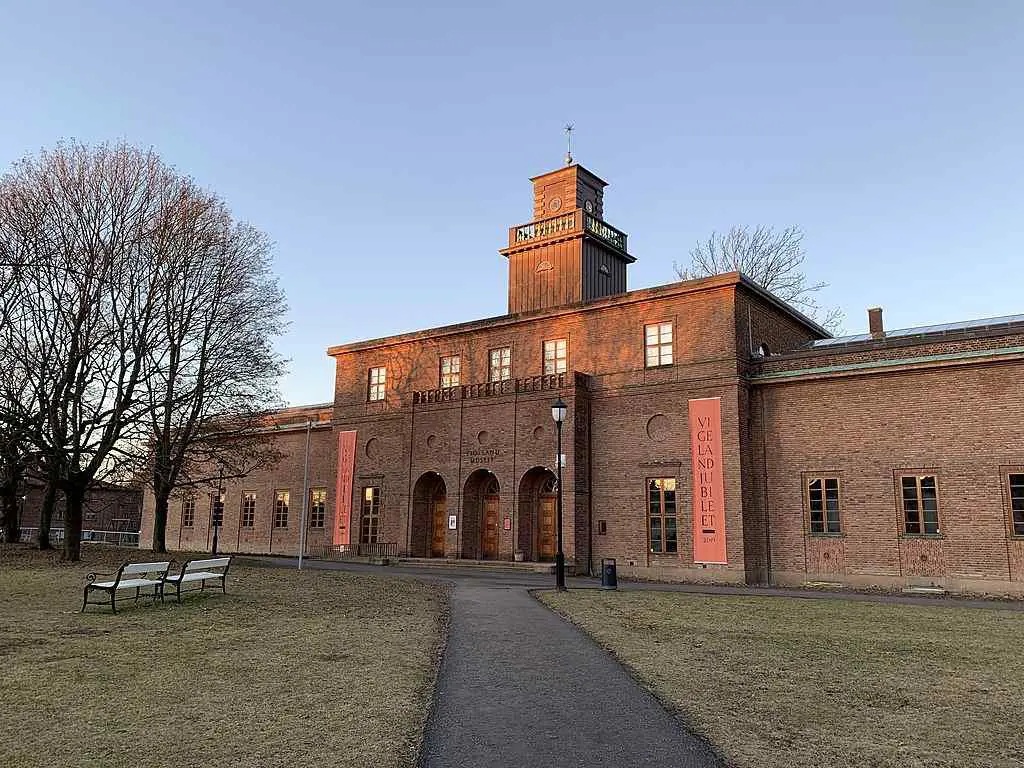
Vigeland Museum is dedicated to sculptor Gustav Vigeland. It’s associated with the Vigeland Sculpture Park in Frogner Park which were created by Vigeland.
The sculpture museum is located at the southern boundary of the park in a neoclassical building. Once home to Vigeland, the building was converted into a museum after he died in 1947.
It’s not often you get the chance to visit a museum which doubled as an artist’s place of work, but that’s what you get when you visit.
This helps to give you a greater perspective of the artistic process Vigeland went through to create his works of art.
Aker Brygge
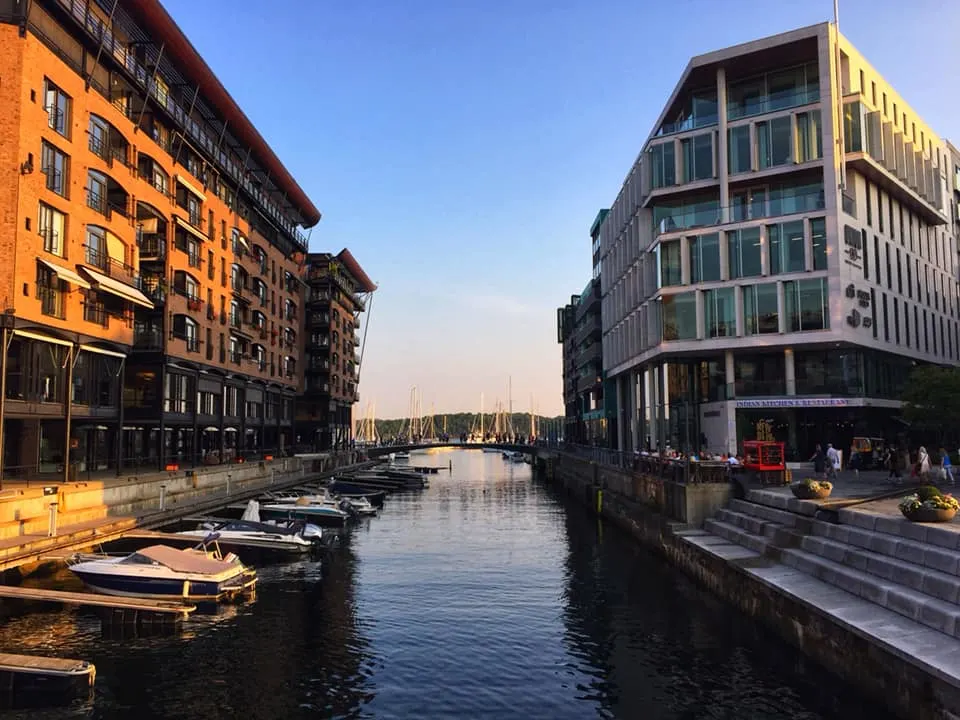
Aker Brygge is a waterside development in central Oslo for shopping and restaurants. It’s here that you will find the Tjuvholmen Sculpture Park and the Novel Peace Centre.
The area is a recent addition to the city in what was a shipyard. Some of the old Brickhouse can still be today, as they mix in with newer buildings.
You’ll find some fantastic places to eat here and if you want a nice meal it’s a good place to go as there is a lot of alfresco dining.
You can also relax and watch the boats come in and out of the nearby harbour. Or, on a warm day, you can jump into the water to cool off and relax at the northern end of the harbour!
Oslo City Hall
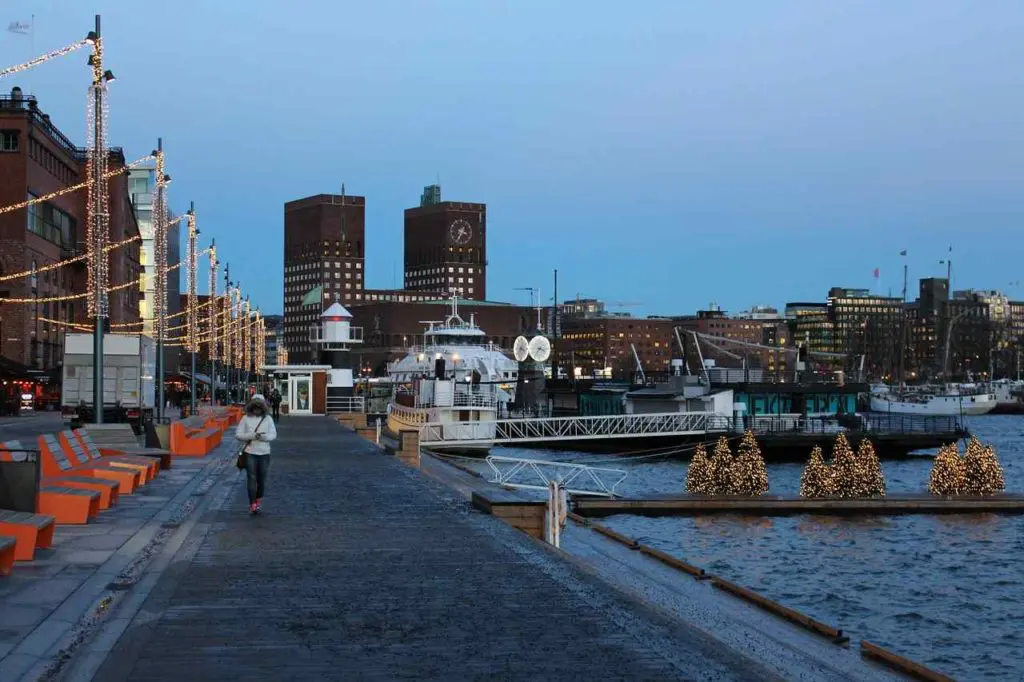
The Oslo City Hall is one of the most recognisable buildings in the city and somewhere you can’t miss during your trip.
It’s located close to the waterfront and is an imposing presence. The City Hall houses the city council, its administration and other municipal organisations.
It’s an impressive building and the red brick facade only makes it more so. Unfortunately, when I was in Oslo in September 2019, the building has off-limits to the public as it, and City Hall Square, were undergoing renovation.
Hopefully, it’s back open in the near future and you get the chance to go inside as well as marvel at its exterior!
It’s easily one of the best places to visit in Oslo and one of the most iconic!
Norway’s Resistance Museum
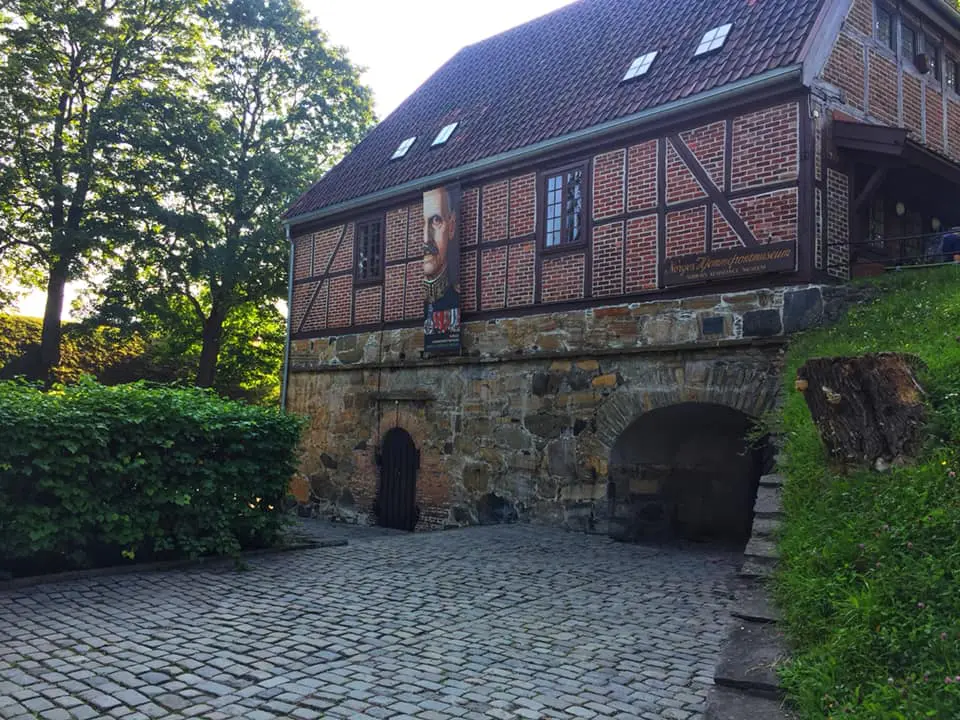
Not many people are aware that Norway was under Nazi occupation during the Second World War. I wasn’t aware of this until recently and I have a degree in history!
The Resistance Museum details the efforts made during the war to resist Nazi rule. If you’re a keen student of history, it’s somewhere you have to visit.
The museum is located in the Akershus Fortress and features exhibitions that re-create the five years of occupation through pictures, documents, newspaper clippings and much more.
It costs 60 NOK to enter, but if you’re interested in history like I am, then this is one of the best things to do in Oslo.
We must learn from the past to ensure it doesn’t happen again, which is why visiting the Resistance Museum is a must when you’re in the city!
Trip along Oslo fjord
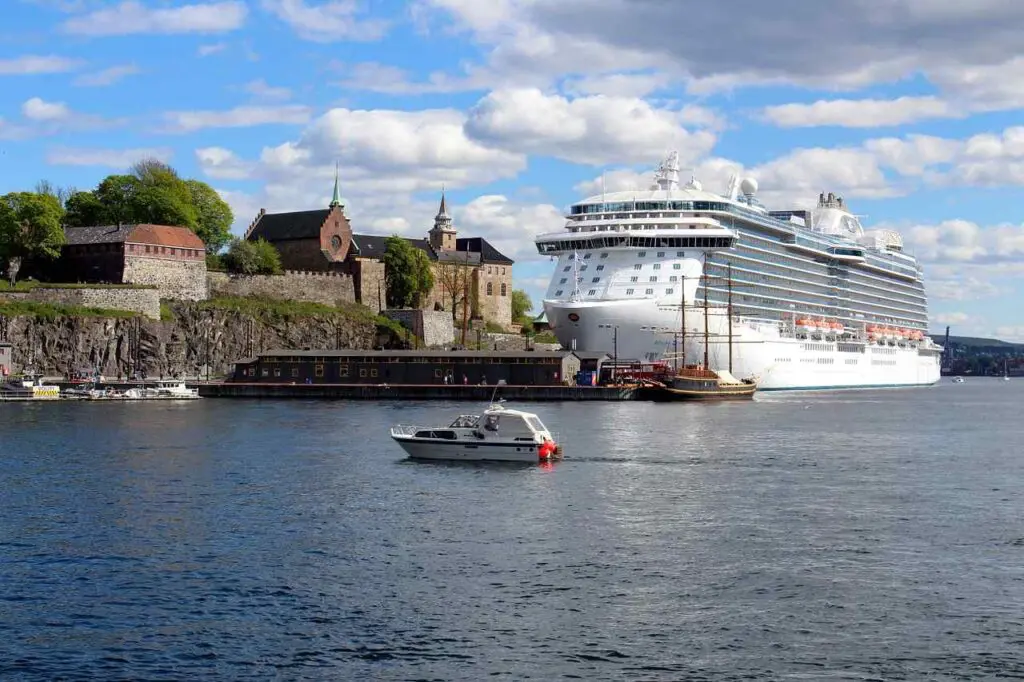
Oslo is built next to a body of water that extends out into the Skagerrak Strait between Denmark, Norway and Sweden.
It’s hard to tell when you’re on land, but there are lots of little inlets and sounds that you can discover when you’re on a boat.
Oslo fjord might not be as impressive as the one you’d see if you were hiking Preikestolen, but it’s impressive nonetheless! You can board a boat from Pier 3 close to the City Hall.
An alternative is to book a tour and spend a few hours out on the water. Either option is good and depends on your budget and deciding on what to do in Oslo while you’re there!
Tjuvholmen Sculpture Park
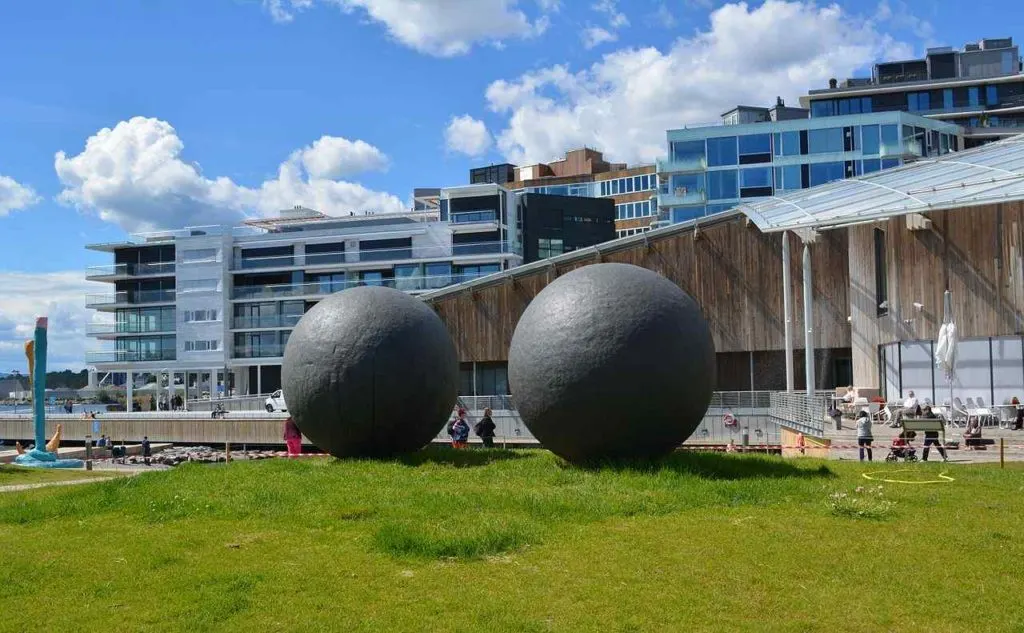
If you’re wondering what to see in Oslo, the Tjuvholmen Sculpture Park has some wacky sculptures that are well worth checking out. I remember coming across them during my trip to Oslo and being amazed.
You’ll find them close to the restaurants and cafes on Oslo’s waterfront. Tjuvholmen City Beach is also here, which is also a popular spot for jumping into the sea during the summer!
The sculptures are big and unusual and a reflection of modern art. To give you a flavour of what you’ll see, one stainless steel sculpture is two giant balls with nipples and a giant anchor!
Not the most conventional pieces of art!
Even if the sculptures don’t float your boat, it’s a good place to visit, as you can relax here in the summer and lay in the sun or join the locals in the water!
Nobel Peace Centre
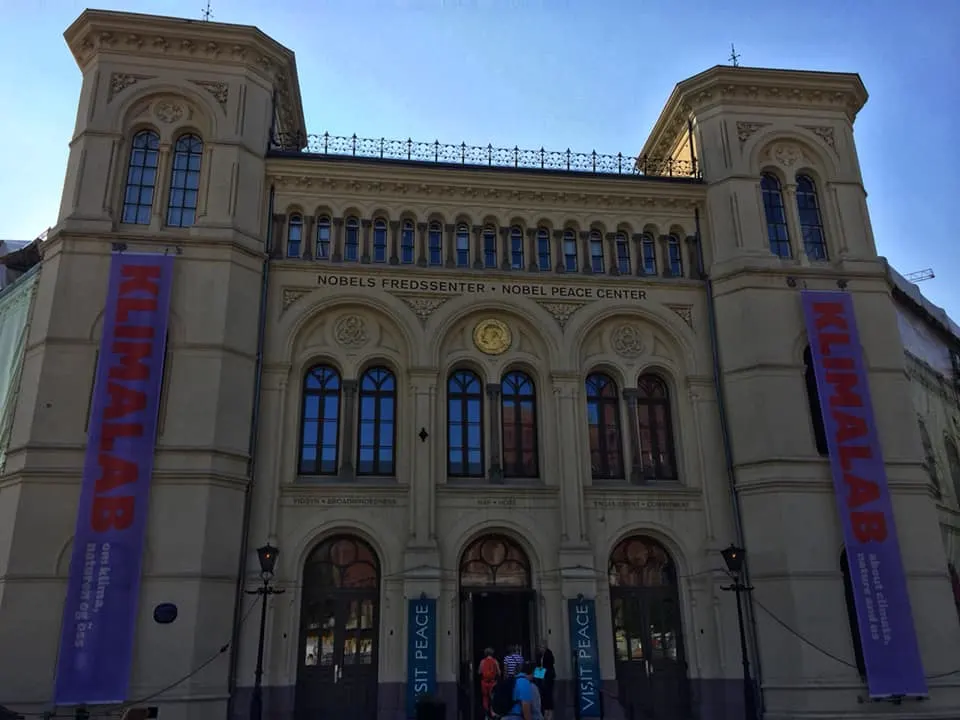
The Nobel Peace Center is a museum dedicated to the ideals of the Nobel Peace Prize. It’s located on the waterfront, not far from the Tjuvholmen Sculpture Park.
The Nobel Peace Prize is one of the most famous awards in the world and this museum is the best place to go to find out more about it.
Inside, you’ll find details about the origins of the prize, those who have received it, and the life of the man the award was named after, Alfred Nobel.
It costs 120 NOK to enter, but if you want to learn more about the prize, it’s a price worth paying!
Oslo Vinterpark
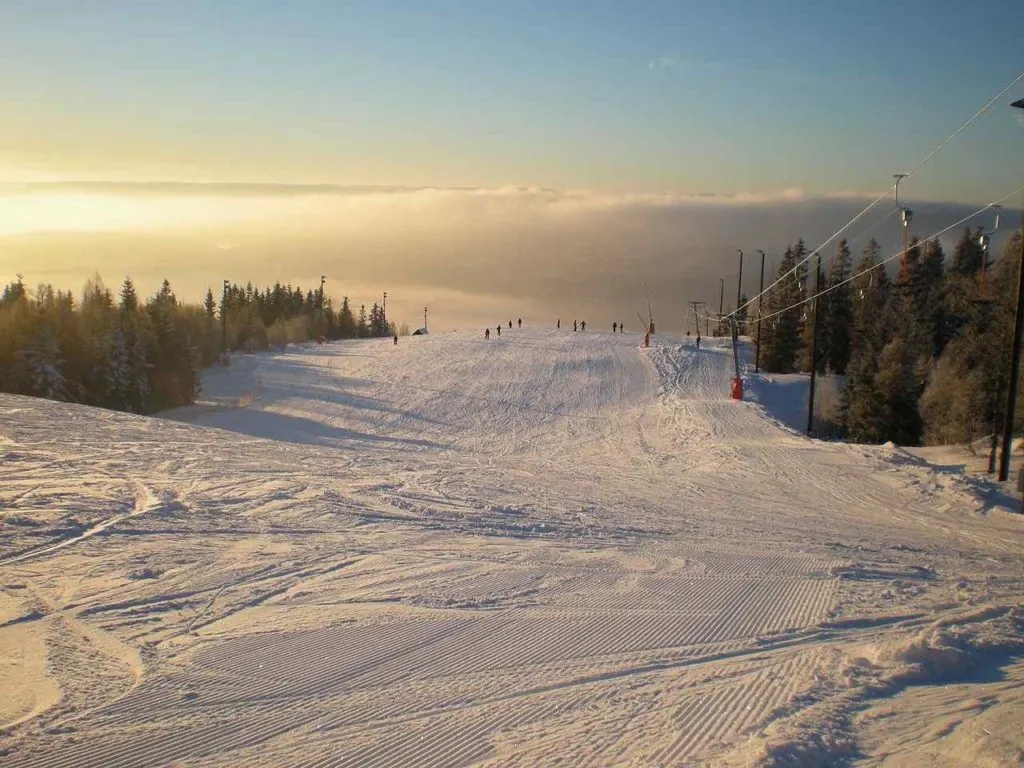
If you’re planning on visiting Oslo during the winter, a trip to the Oslo Vinterpark is a great idea! It’s located 40 minutes away from the city centre if you take the subway line 1 Frognerseteren and get off at the Voksenkollen.
As the name suggests, the park is home to winter sports, mainly skiing and snowboarding. You’ll find 18 different runs to varying difficulty for you to try your hand at.
It doesn’t matter whether you’ve never skied before, or you’re hardcore and have done cross country skiing before, there’s a slop you can head down!
The season is usually from December to April, but this can vary depending on the weather!
If you’re not into skiing, or you’re in Oslo during the summer, you can visit the Holmenkollen Ski Museum. It has a lot of exhibits for you to look at and a dry ski slope for you to use!
National Museum
The National Museum contains the largest collection of art in the Nordic countries. You’ll find contemporary art, architecture and much more.
The museum is in central Oslo and is home to some fascinating pieces of art. Perhaps the most well-known piece of contemporary Norwegian art there is The Scream by Munch.
The new National Museum opened in 2022 in a new building. This building is much larger than before and allows you to see a wide range of collections and exhibits.
If you’re an art lover, you have to visit the National Museum. It’s one of the best things to do in Oslo if you’re a culture lover and you can spend hours walking around enjoying all the various pieces.
Kon Tiki Museum
The Kon Tiki Museum is home to exhibits and objects from the adventurer Thor Heyerdahl’s trip across the Pacific Ocean from South America to Polynesia.
It’s an interesting place to visit to learn more about this adventure, which Heyerdahl did on a rudimentary boat.
The Kon Tiki Museum is in the Bygdøy peninsula in Oslo, which is outside central Oslo. You’ll either need to do some island hopping via a ferry or take the bus to get there.
It’s worth it because the museum is fascinating and there are other museums nearby such as the Fram Museum and Norwegian Maritime Museum you can visit too!
Fram Museum
The Fram Museum will tell you all about the Norwegian expeditions in the polar regions.
The historical museum focuses on three explorers in particular, Fridtjof Nansen, Otto Sverdrup and Roald Amundsen, the latter of which was the first person to reach the North Pole.
The museum mainly focuses on the exploration vessel of the same name, which was built for the Arctic and Antarctic expeditions.
It’s still intact today and you can go inside it and get a feel for what it was like onboard as the explorers approached the polar regions!
Best Time to Visit Oslo
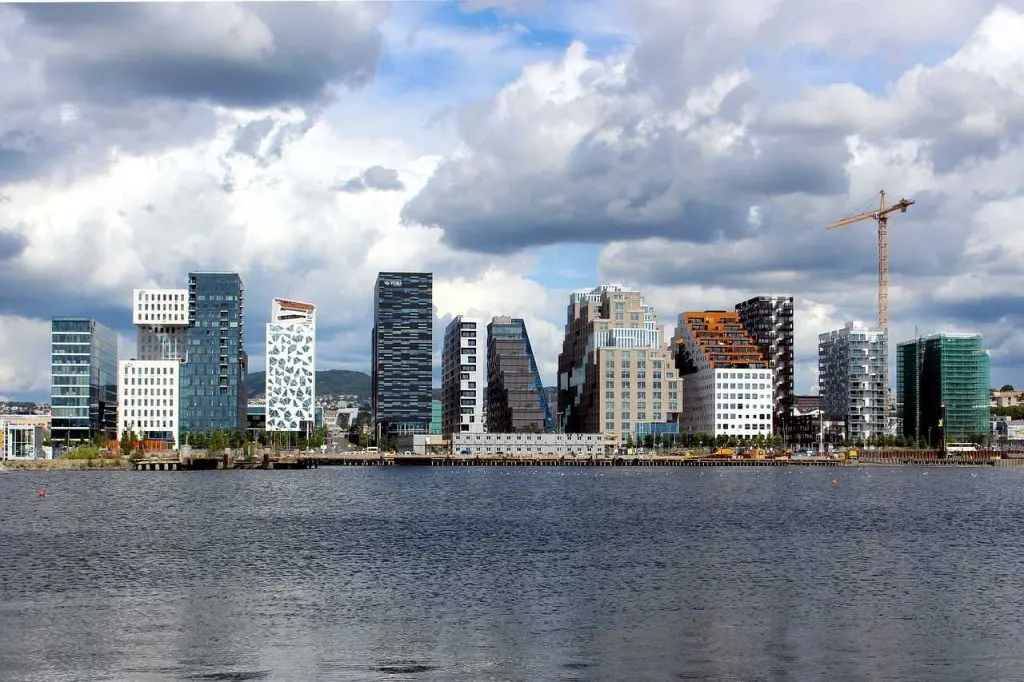
Norway is further north than most countries which means the weather is much colder during winter.
The good thing is that Oslo is located in the south of the country as opposed to somewhere like Tromso in the Arctic Circle.
While Oslo is still cold during these months, it’s not as cold as other places in the country. The flipside is that it can be warm during the summer.
When I visited in early September, it was around 15 to 20 degrees and the weather was great!
If you want nice weather, then spring and summer might be your best bets. You’re guaranteed more hours of sunshine and it’s easier to explore the city when it’s warm.
However, Norway is a nice place during the winter. There’s something magical about it, and Oslo is no different. As it gets darker earlier in Norway, you do get fewer hours of sunshine though.
One consolation is that you may see the Northern lights if you’re very lucky, but you’d likely have to head into the Arctic Circle to definitely see them.
How to Get Around Oslo
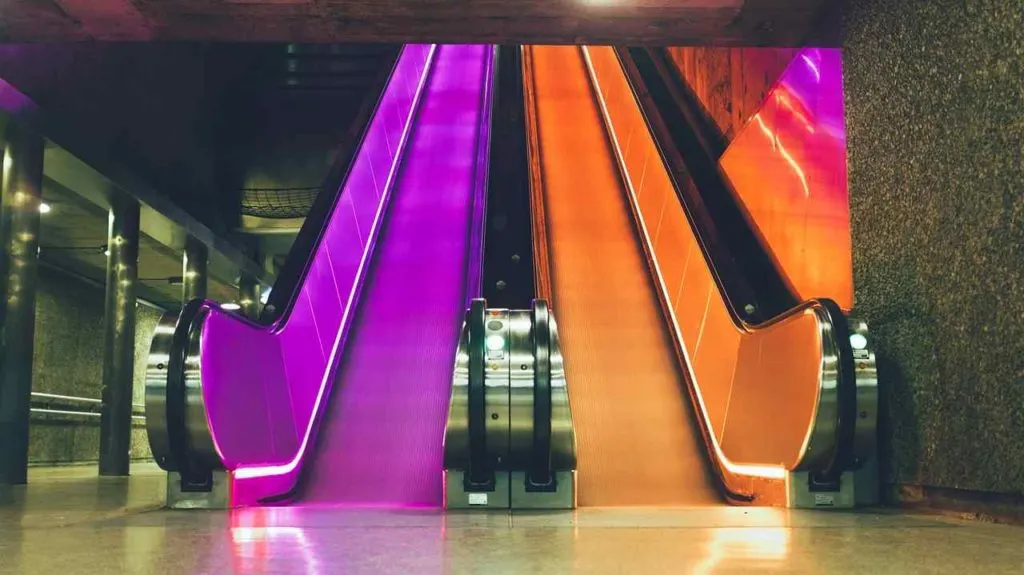
Oslo isn’t the biggest city so walking on foot means you can get to most places in a reasonable time. this is probably the best way to get around the see city for the most part.
However, there are some places where you will need to take public transport. Thankfully, the public transport system in Oslo is fantastic, so this is a doddle.
You can get a single ticket for 36 NOK (€3.50), while a day ticket costs 108 NOK (€10). Buying a day ticket is a good idea as you can hop on and off the bus or the metro as much as you want throughout the day.
If you want to visit the Viking Ship museum, Nordmarka and the Holmenkollen Ski Jump, you’ll need to use public transport, as they are all outside of the city centre.
You can buy tickets at Naversen and 7-Eleven stores as well as at the central train station and most other stations in the city.
Frequently Asked Questions
Is Oslo worth visiting?
Yes, is the simple answer to this question. Oslo is a fantastic city and as you’ve seen there are lots of things to do!
The variety of things to see and do in Oslo is what makes it such a great place to visit. You can visit numerous world-class museums such as the Ibsen Museum and Astrup Fearnley Museum and art galleries, head out into some fantastic national parks and check out some amazing parks.
Plus, you can marvel at fantastic architecture like the Oslo Opera House and hop on a boat and admire the incredible Oslofjord!
Is Oslo worth visiting? Undoubtedly!
Is Oslo really expensive?
There’s no getting away from this, Oslo is an expensive city. The strength of the Norwegian Krona means that everything costs more no matter what your home country.
I’m from England, and it’s not uncommon to pay £10 for a beer, or £15 for a burrito! No matter where you’re from, you’ll need to budget when you visit Oslo.
Doing this will allow you to enjoy the city without worrying about being out of pocket at the end of your trip.
What is Oslo famous for?
Oslo is famous for a variety of reasons. One of which is the cutting-edge architecture that has become commonplace in recent years. You’ll see plenty of examples of this as you walk around the city.
The city is also famous for its museums, such as the aforementioned Munch and Vigeland museums, as well as the Norwegian Folk Museum.
Oslo is also famous for its beauty, especially regarding nature. The parks here are amazing, and the fjord has to be explored when you visit!
Concluding Thoughts
There are plenty of fun things to do in Oslo. Hopefully, this list has provided you with a few ideas for your visit. Norway is a country that’s not as visited as it should be and Oslo is a brilliant place to check out.
Not many destinations have a range of cultural history and natural beauty, which is what makes Oslo such a great place to visit!
Have you been to Oslo? Did you do all of these things or just a few? Is there anything I have left out that you did? Leave me a comment and let me know your thoughts!
Need Travel Insurance?
SafetyWing offers coverage that will give you peace of mind while you’re on the road. If you want to protect yourself while you’re on the road, then click the image to take a look at the options available to you.
Pin For Later
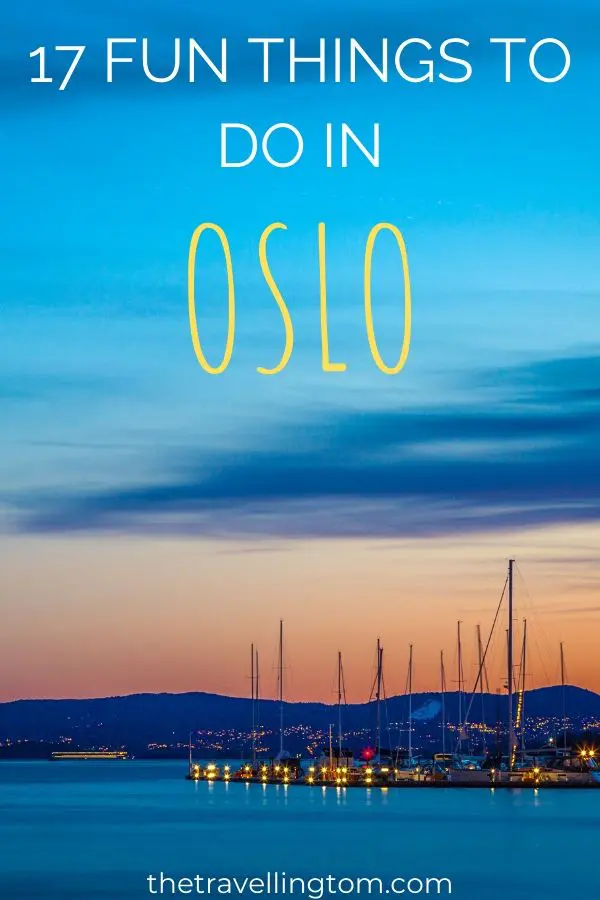
Tom is a travel addict who first left England to spend a year Down Under. Not satisfied with this, he then went to New Zealand, about as far away from home as he could get. He is now planning his next adventures in Europe and Canada while maintaining this blog. Check out the about me page to learn more!

